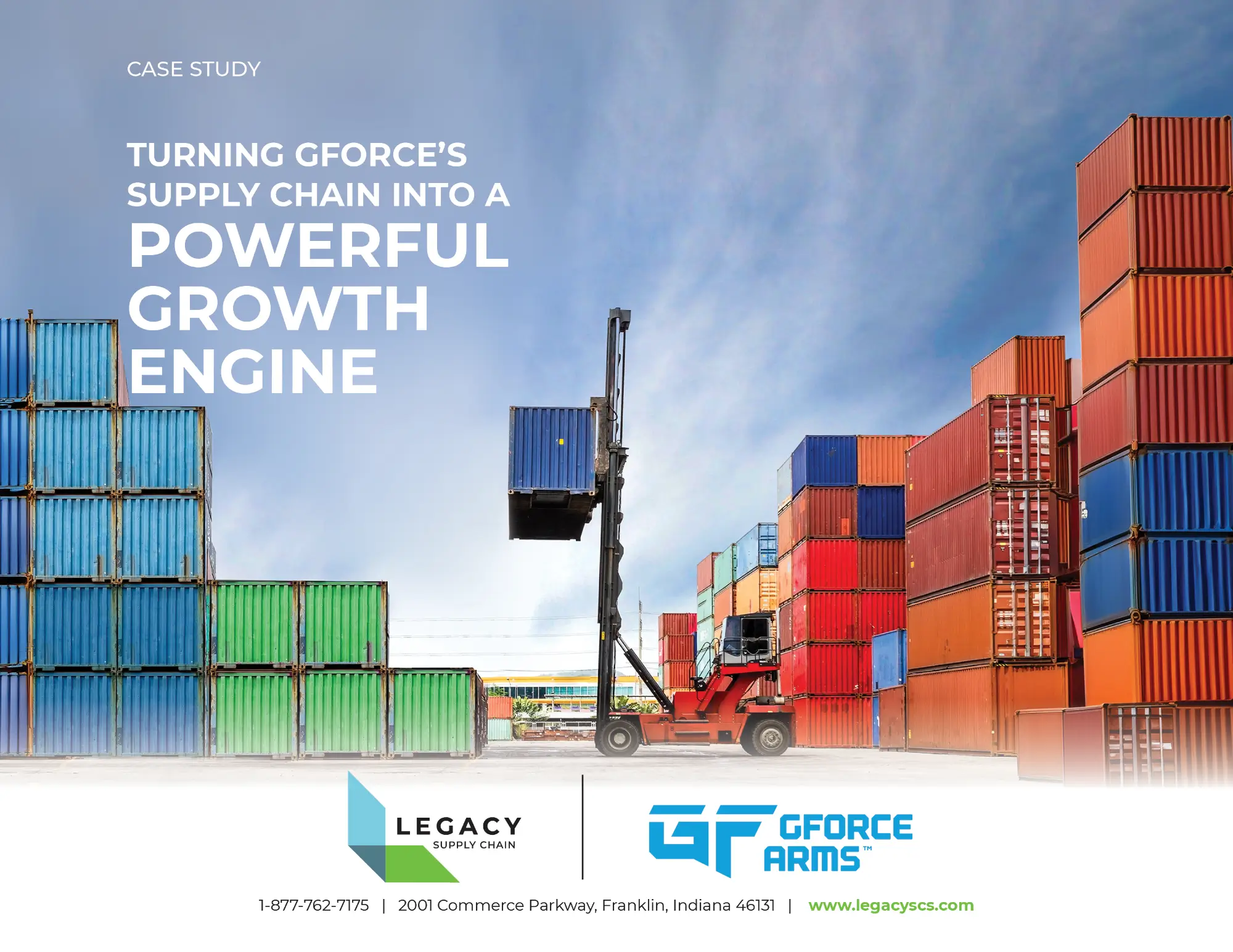Warehousing Options: Dedicated vs. Multi-Client vs. Public [Explained]
Businesses operating multiple sales channels in today’s fast-paced, consumer-driven world must embrace a sound warehousing (and distribution) strategy to stay competitive. Warehouses must be operated effectively and efficiently, and should serve the overriding supply chain goal of optimizing cost-to-serve.
But what warehousing types does your business have in 2018? What type of warehousing operation should your business rely on to store, manage and distribute its products? The reality is that what may work for a small to mid-sized company may not necessarily be the solution for a large, multi-national corporation.
Today’s Types of Warehousing Options
Finding the right warehousing partner with expertise in a dynamic supply chain environment is the key. Today most businesses choose to outsource some or all their warehouse operations to a 3PL warehouse provider because they’ve realized that warehousing (and distribution) are not their core competency.
When outsourcing, your business has essentially three options — you can use a dedicated warehouse, also referred to as a contract warehouse, you can use a multi-client warehouse, or you can use a public warehouse.
- Dedicated warehousing (or contract warehousing) is the outsourced management of warehousing operations, typically in a larger-scale facility, with all labor, value-added services, operational processes, technology and square footage dedicated to a single tenant. Common outsourcers of dedicated warehousing include mid-to-large sized businesses, oftentimes with multiple independent distribution sites serving various consumer channels.
- Multi-Client warehousing (or shared warehousing) is the outsourced management of warehousing operations to a facility that is typically shared with multiple clients, but includes value-added services such as kitting, bulk packing, cross docking and more. Small-to-mid sized business are common outsourcers of multi-client warehousing, as are businesses trying to grow into new markets, or those with seasonal needs.
- Public warehousing is the outsourced storage of products and goods within a facility, typically involving little to no value-added services. Public warehousing is a common solution for small-to-mid-sized business, especially those with seasonal needs.
At the end of the day, it’s all about goals. Whether you are a retailer, distributor, or manufacturer of consumer goods or industrial components — your goal should be to determine how certain factors within a warehouse impact your cost to serve. These factors include; the cost structure associated with the warehousing and associated services, as well as the contract terms related to the length and extent of services.
Another important factor is the supporting infrastructure included within each type of warehousing — from who owns the real estate, the racking & other infrastructure, materials handling equipment, or other components like WMS technology.
Here’s a more thorough breakdown of each option:
Dedicated Warehousing: A Breakdown of Costs, Contracts and Value-Added Services
Dedicated warehousing (aka contract warehousing) almost always involves a multi-year commitment, typically between two to five years, in which the outsourcer and 3PL provider enter into a contract for various elements within a warehouse operation including the building, the labor, and all operational processes & systems. In the dedicated warehousing model the physical facility is owned or leased by either the customer or the 3PL provider.
The cost structure of dedicated warehousing can take various forms – including cost-plus, transactional-based costing, or a hybrid of the two. With cost-plus it’s simple, all expenses are known to the 3PL provider and outsourcer, the 3PL charges a contracted markup to manage the infrastructure, systems, processes and labor within the operation. Transactional or activity-based costing is based on agreed upon rates for all activities related to all inbound & outbound freight handling, storage & inventory management, and value-added services. Capital expenditures including warehouse infrastructure, systems & technnology can either be amortized for the life of the contract, built into the transactional costing structure, or owned altogether by the outsourcer.
An advantage of dedicated warehousing is that it allows for additional pricing transparency, and ability to directly impact key performance metrics & understand unit costs. The entire operation is engineered around the product flow and customer demand requirements of your business. This model also gives your business access to specialized services not often included in multi-client and public warehousing agreements.
These services include, at a very specialized level:
- Bulk packing
- eCommerce order fulfillment
- Cross-docking services
- Inspection services
- Kitting
- B2B and B2C pick/pack and order fulfillment
- Order consolidation
- Packaging services
- Returns processing
- Assembly and light manufacturing
- Reverse logistics
Rework services, such as QI, labeling, bar coding and more, are also typically included in a dedicated warehousing agreement.
Dedicated warehousing makes sense for businesses seeking to optimize distribution networks, synchronize inventory across multiple sales channels, improve efficiency and drive out cost from their supply chain, typically in a larger size environment of at least 50,000 sq. ft.
Multi-Client Warehousing: A Breakdown of Costs, Contracts and Value-Added Services
Multi-client warehousing often involves a far more flexible contractual agreement, typically on a month-to-month or year-to year basis. Multi-client warehousing involves the 3PL provider owning the facility which is typically equipped with infrastructure and systems including WMS, RF/RFID technology, racking and materials handling equipment.
Multi-client warehousing usually involves a blend of transactional-based pricing described above, fixed storage charges for space used, and “pallet-in-pallet-out” charges for each pallet (or any unitized load) of product that is handled. Value-added services typically are much the same as in the dedicated model, though they may not be as specialized overall as they must be performed for many individual customers.
These services include:
- Bulk packing
- eCommerce order fulfillment
- Cross-docking services
- Inspection services
- Kitting
- B2B and B2C pick/pack and order fulfillment
- Order consolidation
- Packaging services
- Returns processing
- Assembly and light manufacturing
- Reverse logistics
For businesses choosing a multi-client model, things like leveraging existing warehousing infrastructure and ability to quickly ramp up in new customer markets are top of mind.
Public Warehousing: A Breakdown of Costs, Contracts and Value-Added Services
Structurally, public warehousing and multi-client are the same – both involve the outsourcer utilizing a 3PL provider’s warehouse facility. And, oftentimes contract terms to use a public warehouse are on a short-term month-to-month basis. For the most part this is where the similarities end. Public warehousing typically only provides for storage and basic pallet in-out services offered to the outsourcer, value-added services are not part of the offering.
A public warehouse model can make sense for businesses with product that requires little specialized handling or has very low inventory turns, or those looking for short-term seasonal or overflow storage. It is often utilized for individuals looking for a short term storage option for personal effects like automobiles or boats.
Dedicated vs. Multi-Client vs. Public
| Contract Terms | Cost Structure | Infrastructure | Type of Outsourcer | |
| Dedicated Warehouse | A multi-year commitment of between 2-5 yrs. | Cost +, transaction-based, or hybrid. | Real estate, systems and other infrastructure owned by outsourcer or 3PL. Labor management & Value-added services performed by 3PL. |
Mid-to-large sized businesses, oftentimes with multiple independent distribution sites serving various consumer channels. |
| Multi-Client Warehouse | Flexible month-to-month basis for both short and long term agreements. | Transaction-based, fixed storage, pallet in/pallet out. Some multi-client contracts may involve cost+ elements for certain solution components. | Real estate, systems and other infrastructure owned by 3PL. Value-added services performed by 3PL. |
Small-to-mid sized business, as are businesses trying to grow into new markets, or those with seasonal needs. |
| Public Warehouse | Flexible month-to-month contract. | Cost (no additional value-added services available). | Real estate, systems and other infrastructure owned by 3PL. Storage and basic pallet in-out services performed by 3PL. |
Small-to-mid-sized business, especially those with seasonal needs. |
Trusting warehousing and distribution to a 3PL provider has become one of the most impactful strategies for businesses to optimize cost-to-serve, and an ability to create a solution that works for your business. To do this, you need a partner with expertise in dynamic supply chain environments.
At LEGACY Supply Chain Services, we specialize in full service solutions with high touch service. Contact us today to learn more about our warehousing services.
-
Legacy Achieves Platinum Status for Delivery Excellence From Amazon
When it comes to supply chain performance, the margin for error is razor thin. Customers expect orders to arrive quickly, accurately, and...
+ Read more -
IPS Corporation selects Legacy as 3PL Partner to drive Supply Chain Transformation
FRANKLIN, IN | September 10th, 2025 – Legacy SCS announced that it has been selected by IPS Corporation, a global leader in Water...
+ Read more -
How GForce Transformed Its Supply Chain Into a Powerful Growth Engine
When GForce Arms launched in 2020, the mission was simple but ambitious: deliver affordable, reliable firearms with the speed and...
+ Read more




